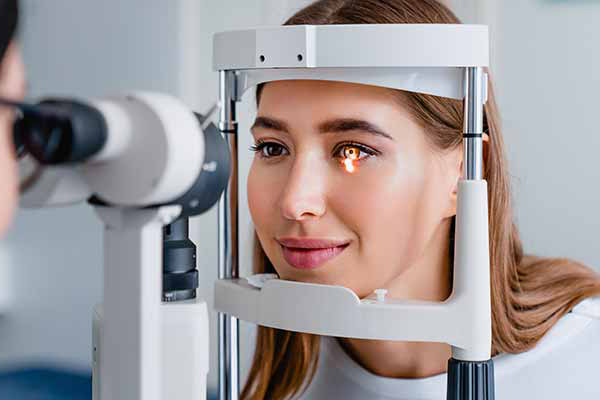Andalusia Pediatrics: Compassionate Take Care Of Your Children
Andalusia Pediatrics: Compassionate Take Care Of Your Children
Blog Article
The Benefits And Drawbacks of Different Refractive Surgical Treatments for Enhanced Eyecare

LASIK Surgery
LASIK surgery is a frequently executed refractive procedure that aims to deal with vision concerns such as astigmatism, nearsightedness, and farsightedness. Throughout the treatment, a thin flap is created on the cornea, and a laser is used to reshape the underlying cells, dealing with the refractive mistake.
One of the main benefits of LASIK surgery is the rapid renovation in vision experienced by several individuals. It is vital for individuals thinking about LASIK surgery to undergo a complete analysis by an eye treatment expert to determine if they are ideal candidates for the treatment.
PRK Procedure
The PRK procedure, also understood as Photorefractive Keratectomy, is a kind of refractive surgical treatment that intends to deal with vision problems comparable to LASIK surgical treatment. Unlike LASIK, which includes producing a flap in the cornea, PRK functions on the surface area layer of the cornea.
One of the benefits of PRK over LASIK is that it gets rid of the risk of flap-related difficulties since no flap is created throughout the surgery. This can be valuable for people with thin corneas or those involved in get in touch with sporting activities where eye injury is an opportunity. However, the healing time for PRK is commonly much longer compared to LASIK, as the outer layer of the cornea needs time to regenerate after the treatment. In spite of the longer recovery period, PRK can be an appropriate choice for individuals seeking vision modification surgical treatment.
SMILE Surgery
An advanced refractive surgery technique obtaining appeal in the area of ophthalmology is SMILE Surgical treatment. Little Incision Lenticule Removal (SMILE) is a minimally intrusive treatment that fixes vision by reshaping the cornea using a femtosecond laser. Unlike typical LASIK surgical procedure, SMILE Surgical treatment entails producing a little incision in the cornea to extract a lenticule, which results in much less interruption to the corneal structure and possibly quicker recovery times.
Among the main advantages of SMILE Surgical procedure is its capability to treat nearsightedness (nearsightedness) and astigmatism with high precision, leading to exceptional visual end results for people. The minimally invasive nature of the procedure additionally lowers the threat of issues such as dry eye disorder, making it a beneficial choice for individuals looking for refractive surgical procedure.

LASEK Technique
Having actually checked out the benefits and factors to consider of SMILE Surgical treatment, another significant refractive surgery strategy worth taking a look at is the LASEK Technique. LASEK, which represents Laser-Assisted Subepithelial Keratectomy, is a type of laser eye surgical treatment that aims to remedy refractive mistakes such as myopia (nearsightedness), hyperopia (farsightedness), and astigmatism.
Unlike LASIK, LASEK does not entail creating a corneal flap. Rather, during a LASEK treatment, the surgeon makes use of a diluted alcohol option to loosen the thin external layer of the cornea, called the epithelium. This layer review is after that gently relocated apart to enable the laser to improve the underlying corneal tissue. Once the cornea has been reshaped to the wanted level, the epithelial layer is repositioned.
One of the main benefits of LASEK is that it can be appropriate for individuals with slim corneas who may not be great prospects for LASIK. In addition, LASEK normally causes marginal post-operative pain and a quicker healing time contrasted to PRK. The visual healing procedure with LASEK might be somewhat longer than with LASIK.
Implantable Get In Touch With Lenses
Implantable Contact Lenses offer a long-term vision adjustment solution for people looking for an option to typical call lenses or glasses. These lenses, also called phakic intraocular lenses, are operatively put right into the eye to correct refractive errors such as myopia (nearsightedness), hyperopia (farsightedness), and astigmatism. andalusia pediatrics. Unlike standard get in touch with lenses that sit on the surface of the eye, implantable call lenses work within the eye itself, providing clear vision without the need for daily upkeep or removal
Among the crucial advantages of implantable contact lenses is their permanence. As soon as put, they can remain in the eye forever, using regular and secure vision modification. In addition, these lenses can be an exceptional choice for individuals that are bad candidates for laser eye surgical procedure or who like a reversible vision correction treatment.
Nevertheless, implantable contact lenses do lug some dangers, including the capacity for cataracts or raised eye pressure. It is crucial for people considering this alternative to talk to an eye go to website treatment specialist to figure out if implantable contact lenses are the appropriate selection for their details demands and eye wellness.
Conclusion
In final thought, each type of refractive surgical procedure has its very own advantages and negative aspects. LASIK surgical treatment is popular for its fast recovery time, while PRK treatment may be suitable for patients with thin corneas. SMILE surgical procedure provides marginal discomfort during the procedure, however LASEK technique may have a longer recovery procedure. Implantable get in touch with lenses give an alternative for those that are not suitable prospects for standard surgical procedures. People need to seek advice from their eye treatment provider to establish the very best alternative for their specific demands.

Generally, SMILE Surgical treatment presents a promising option for individuals looking to improve their vision click here to read via refractive surgery.
Report this page